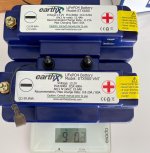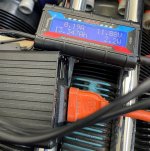Earthx seems to have provided a cost effective, lightweight and safe product for our experimental airplanes. They have now had batteries in the experimental market for several years. I was wondering if anyone has experienced a venting of the battery, either in the cockpit or not. That is a key safety element for me.
I want to get rid of my Concord boat anchor that I have to replace every 3-4 years. If others have good or bad experiences otherwise, I’d be interested in hearing.
I want to get rid of my Concord boat anchor that I have to replace every 3-4 years. If others have good or bad experiences otherwise, I’d be interested in hearing.






